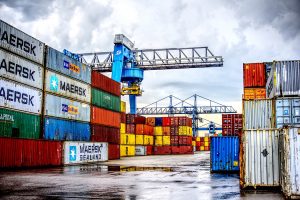洞察力
请查看新的产业动向消息。

Overcapacity and uncertainty in the global economic and political climate have been keeping freight rates depressed, while rising oil prices, vessel charter and operational costs add pressure on shipping lines to run a tighter ship. In order to move more, and move faster, carriers have been trending towards bigger vessels that can carry bigger cargo volumes to achieve higher economies of scale. These mega ships need larger ports with the capacity, equipment and technologies that can support the most efficient vessel turnaround times.
With the bigger ports caught in the snarl of handling ultra-size vessels along increasingly congested trade routes, the initiated small and midsized ports are already readying themselves for the cascade of large vessels redeployed their way. Investments in infrastructure along with the right smart port technologies, processes and partners will give smaller players big advantages. In addition to more power to lure some vessel traffic from rival ports, smaller smart ports gain the agility to ride high on the wave of the shipping world’s new normal.
First Mover Advantage
Indonesia Port Corporation’s (IPC) Pelindo II, for one, has been playing it smart for a while now. The Indonesian state-owned enterprise has been undergoing vast transformation in recent years with ongoing improvements by way of hard and soft infrastructure.
When IPC kick started plans to implement a new Terminal Operating System (TOS) for all the terminals under its operation, it selected TOS provider CyberLogitec to realize its I.T. and TOS system implementation investment. From grooming talents and adopting information and communications technologies, to adding new equipment, facilities and ports, Pelindo II recorded achievements of sizeable growth in revenue and container traffic within a short timeframe.
Doing Big Things
A lower cost base, agility and adaptability to change are key reasons midsized ports are making relatively swifter migration to smart port technologies.
Linking all lines of communications together, every aspect of the logistics chain can be managed and controlled from vessel to gate. Incorporating integrated intelligence, big-thinking ports can deploy Internet of Things (IoT) technology onto their infrastructure and equipment to enable resources and processes to interact and exchange ‘live’ data, empowering higher performance from the day-to-day operations to the highest level of strategic management. With vital port logistics processes tracked in real time, smaller ports can gain even more agility, optimizing resources while reducing errors and unplanned disruptions.
Another significant trend in favor of smaller players is the rise of smart port solutions tuned to their needs.
Most TOS solutions are primarily designed for container handling ports. Yet, many small and midsized terminals operate with both containerized and general cargo handling. With more and more carriers starting or expanding their multipurpose services, we are seeing a comeback trend of break bulk cargo, which is proving to be a fast-growing forte for small and midsized ports to meet this change of tides.
Turning to the Cloud
Conventional TOS solutions are implemented on-premise and require ports to carry the burden of investment on the IT infrastructure and equipment, and to retain a team of IT resources to manage and maintain them, needing to constantly keep the IT equipment up-to-date and worry about infrastructure security. This creates a high initial capital investment and high recurring IT costs.
But forward-thinking ports are smart. They know big change can start small. Whether is it to begin by automating a particular section of yard processes, or connecting a pool of people who used to work in isolation, complexities can be reduced and efficiencies gained along with new opportunities for optimization and, yes, innovation.
Small ports also know that if there’s a will, there’s a way. And one of these ways is a cloud-based solution.
Many digital solutions today are readily available in subscription-based models. For ports of every size, cloud-based is synonymous with lower upfront costs, quicker set up and deployment centrally from the cloud.
A robust TOS, for one, is an advanced terminal operating system for small and midsized container terminals with the capability of handling other cargo types. The system gives smaller players the capabilities afforded to their larger counterparts, yet it makes good sense for the ‘big boys’ as well.
A new business case
With the right solutions, port operators can automate and centralize standard operation procedure management and optimize business processes in a way that maximizes productivity and profitability. Inbuilt intelligent algorithms help operations personnel plan, schedule, and forecast operational requirements of vessels, yard and container handling equipment in a smart and optimized way. Data updates are synchronized in real time on all devices to assist the operation of job activities, especially when exceptions arise.
A multipurpose TOS is capable of handling all types of cargo from cars to containers and bulk commodities and has scalability to manage multiple terminals in a single configuration. Fully customizable, configurable and adaptable to the dynamic needs of each terminal, the system ensures all aspects of operations can be managed in real-time while keeping track of all cargo movements.
Entirely HTML5-based, and operable on all devices, the solution enables users to access the applications anytime, anywhere even on their mobile devices as long as there is internet connectivity. From a single-window view with highly intuitive user interface comprising of rich graphics, yard operators can easily zoom in and out of the yard with full 3D visibility including ability to view into in-between container stacks.
Moving seamlessly from screen to screen, users enjoy information at their fingertips that aids close monitoring of yard operations. Built to be highly adaptive to change, CyberLogitec’s latest innovation is scalable to accommodate the growing demands of progressive ports.
Summary
In the long run, container traffic is projected to be on the rise particularly in the emerging economies of the world. While they cannot physically compete with large ports in their capabilities to serve today’s mega vessels, smaller ports can leverage smart technologies to reinvent themselves and cruise comfortably into the new era of shipping.


